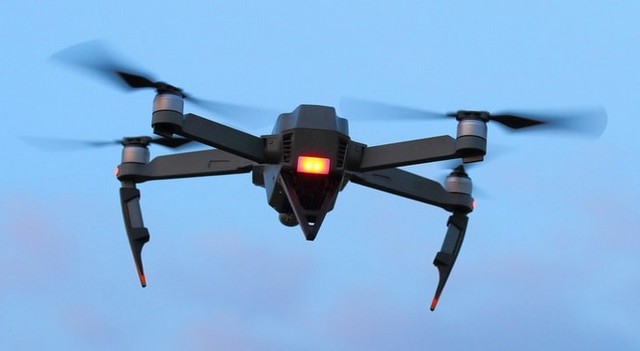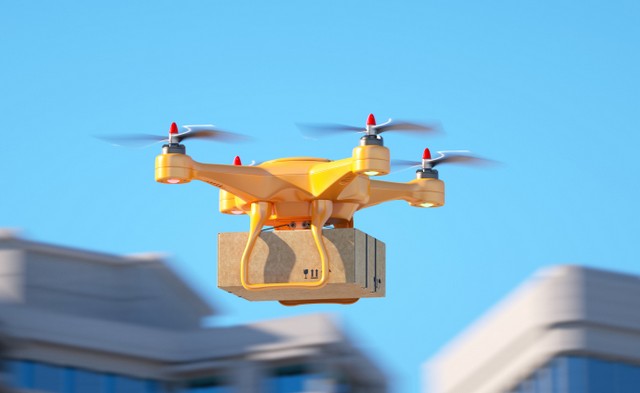Drones To Be Used To Transport Medical Supplies In India
Aadhya Khatri - Dec 05, 2018

Indian government plans to use drones for delivering medical supplies and organs.
- Hundreds Of Drones Crashed Into Building During Performance
- This AI Defense System Forces Drones To Land Autonomously
- IIT Kharagpur Develops Drones To Bring 5G To Zero Network Area
The new policy on unmanned aircraft could result in the delivery of medical supplies from one hospital to others using drones. The registration process regarding this matter took place on the 30th of November.
According to Jayant Sinha, the Minister of State for Civil Aviation, the state is looking into the prospect of having drone ports on hospital campus to further support remotely piloted delivery.
Mr. Sinha also presented one of these portable aircraft’s medical applications in support of these ports. This example was that harvested organs could be able to travel more quickly to recipients thanks to these drone harbors. This kind of transportation is now possible because of The Drone Policy 2.0.
After the registration, drones will be granted legal status certified by licenses. These permits are expected to be out a month later.
As he was talking to the press, another step of the policy, which is mainly on letting drones operate beyond the line-of-sight in some areas, is underway. This could lead to corridors for drones from hospital to hospital being created.
A global aviation summit takes place in Mumbai on the 15th of January will see the first draft of the civil aviation requirement being issued for consultation.
Some other vital changes are under consideration. One of them could be authorizing several drones to be under one pilot control in certain areas. This permission is limited to consignment delivery by now.
The guidelines and policy regarding drones public in August will open up possibilities for these unmanned aircraft to prove their applications in civil aviation.
On the Drone Regulations 1.0, Suresh Prabhu, the Civil Aviation Minister stated that the policy would encourage the development of the remote-controlled aircraft, which pack a wide array of practical applications includes agricultural aerial surveys, precision logistics, and disaster relief.
The regulation will be totally digital on a “Digital Sky” platform, which means that the system regarding drones will be completely held online.
This would serve as the very first management platform for unmanned traffic. It governs and grants permissions for drones to operate. The owners and pilots of these remote-controlled aircraft are required to filling in information regarding them and their devices. The drone’s use and flight path are also necessary.
Some of the aspects that are permitted by the regulations are daytime operation only, visual line-of-sight and the fact that drones are not allowed to fly above the altitude of 400 ft.
The rules also present a list of different types of drones. All of these have to register and will be issued a UIN (short for Unique Identification Number). Exceptions include the type that has weight under 250 grams, the government and intelligence agencies owned aircraft.
The regulations require flight plans to be completed and owners or pilots must acquire Flight Information Centre number or Air Defence Clearance. The areas that are out-of-bounds for drones are the immediate vicinity around airports, international borders, other strategic locations, military zones, and state capitals, just to name a few.
The law also contains information on the requirement regarding pilot training and drone’s manufacturing. However, except for the aircraft that are used by government agencies, other drones are not allowed to deposit items as for now.
Featured Stories

Features - Jul 01, 2025
What Are The Fastest Passenger Vehicles Ever Created?

Features - Jun 25, 2025
Japan Hydrogen Breakthrough: Scientists Crack the Clean Energy Code with...

ICT News - Jun 25, 2025
AI Intimidation Tactics: CEOs Turn Flawed Technology Into Employee Fear Machine

Review - Jun 25, 2025
Windows 11 Problems: Is Microsoft's "Best" OS Actually Getting Worse?

Features - Jun 22, 2025
Telegram Founder Pavel Durov Plans to Split $14 Billion Fortune Among 106 Children

ICT News - Jun 22, 2025
Neuralink Telepathy Chip Enables Quadriplegic Rob Greiner to Control Games with...

Features - Jun 21, 2025
This Over $100 Bottle Has Nothing But Fresh Air Inside

Features - Jun 18, 2025
Best Mobile VPN Apps for Gaming 2025: Complete Guide

Features - Jun 18, 2025
A Math Formula Tells Us How Long Everything Will Live

Features - Jun 16, 2025


Comments
Sort by Newest | Popular